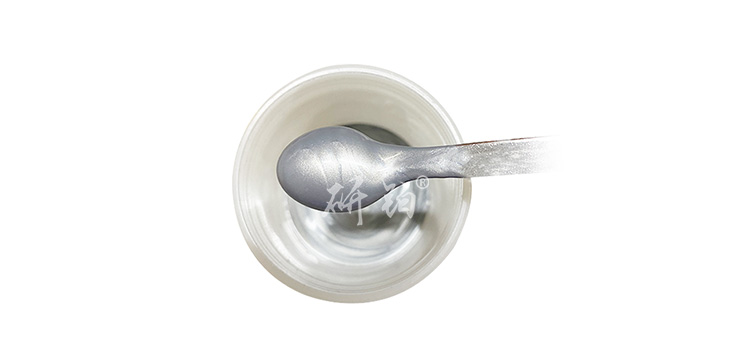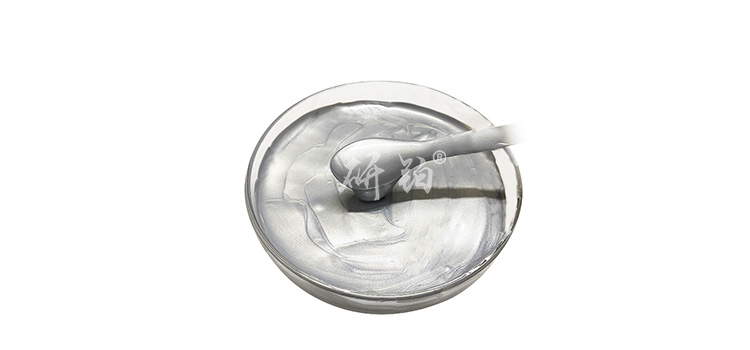

Hotline:0755-22277778
Tel:0755-22277778
Mobile:13826586185(Mr.Duan)
Fax:0755-22277776
E-mail:duanlian@xianjinyuan.cn
Conductive silver pasteIt is a composite conductive polymer material, which is a mechanical mixture slurry composed of metal conductive silver powder, base resin, solvent, and additives.
High temperature conductive silver pasteIt has excellent conductivity and stable performance, and is one of the important basic materials in the field of electronics and microelectronics technology. It is widely used in integrated circuit quartz crystal electronic components, thick film circuit surface assembly, instrumentation and other fields.The three categories that make up silver conductor paste require different types of silver powder or combinations as conductive fillers, and even different formulations in each category require different silver powders as conductive functional materials. The purpose is to achieve the maximum utilization of silver conductivity and thermal conductivity with the least amount of silver powder under a determined formulation or film-forming process, which is related to the optimization of film performance and cost.

The conductivity of polymers is mainly determined by the conductive filler silver powder, and the amount of silver powder used is the determining factor for the conductivity of conductive silver paste. Silver powder contentConductive silver pasteThe influence of volume resistivity can be observed in many experiments, and the conclusion is that the optimal silver powder content is between 70% and 80%. The experimental results conform to the pattern. This is because when the silver powder content is low, the probability of particles coming into contact with each other is small, and the conductive network is not easily formed; When the content is too high, although the probability of particle contact is high, the resin content is relatively low, and the bonding effect of the resin connecting silver particles decreases accordingly, resulting in a decrease in the chance of particle contact and a poor conductive network. As a result, the electrical resistivity is also high, and the adhesion of the conductive paste is poor. When the filler content reaches an appropriate level, the conductivity of the formed network is optimal, with the lowest electrical resistivity and highest conductivity.
Conductive silver paste reference formula one:
| Ingredients | Quality percentage | Ingredient Description |
| Silver powder | 75-82% | conductive filler |
| Bisphenol A-type epoxy resin | 8-12% | resin |
| Anhydride curing agent | 1-3% | curing agent |
| Methylimidazole | 0-1% | accelerator |
| butyl acetate | 4-6% | non-activated thinner |
| Reactive diluent 692 | 1-2% | Reactive diluent |
| Tetraethyl titanate | 0-1% | Adhesion promoter |
| polyamide wax | 0-1% | Anti settling agent |
Reference formula 2 for conductive silver paste: conductive silver powder, E-44 epoxy resin, tetrahydrofuran, polyethylene glycol
Silver powder: 70% -80%
Epoxy resin: tetrahydrofuran mass ratio of 1: (2-3)
The mass ratio of epoxy resin to curing agent is 1.0: (0.2~0.3)
The mass ratio of epoxy resin to polyethylene glycol is 1.00: (0.05-0.10)
High boiling point solvents: butyl anhydride acetate, diethylene glycol butyl ether acetate, diethylene glycol ethyl ether acetate, isophorone
Curing principle: In the structure of epoxy resin, there are hydroxyl groups (>CH-OH), ether groups (- O -), and extremely active epoxy groups. The high polarity of hydroxyl and ether groups creates strong intermolecular forces between epoxy molecules and adjacent interfaces, while the epoxy groups react with free bonds on the surface of the medium (especially metal surfaces) to form chemical bonds. Therefore, epoxy resin has high adhesion and a wide range of applications, commercially known as the "universal glue". In addition, epoxy resin can also be used for coatings, casting, impregnation, and molds. However, before curing, epoxy resin has a thermoplastic linear structure, and a curing agent must be added during use. The curing agent reacts with the epoxy group of the epoxy resin to form a network structure of large molecules, which become insoluble and non melting thermosetting products. Epoxy resin has a relatively low molecular weight before curing, and can only form a large polymer shape through curing. The curing of epoxy resin requires the use of curing agents, and there are many types of curing agents, mainly polyamines and polyacids, whose molecules contain active hydrogen atoms. Among them, the most commonly used are liquid polyamines such as diethylenetriamine and triethylamine. When epoxy resin is cured at room temperature, it is often necessary to add some accelerators (such as polythiols) to achieve rapid curing. The selection of curing agent is related to the curing temperature of epoxy resin. Polyamines and polythioamines are generally used for curing at normal temperatures, while acid anhydrides and polyacids are generally used as curing agents for curing at higher temperatures. Different curing agents have different crosslinking reactions.

Low temperature and room temperature curing conductive silver adhesiveMain applications: It has the characteristics of low curing temperature, extremely high bonding strength, stable electrical performance, and is suitable for screen printing. Suitable for conductive and thermal bonding in ambient temperature curing welding applications, such as quartz crystals, infrared pyroelectric detectors, piezoelectric ceramics, potentiometers, flash lamps, as well as shielding and circuit repairs. It can also be used for conductive bonding in the wireless instrument industry; It can also replace solder paste to achieve conductive bonding.
Curing agents: acid anhydrides such as maleic anhydride, phthalic anhydride, methyl imidazole, etc.
Curing agent dosage: If the amount of curing agent is small, the curing time will be greatly prolonged or even difficult to cure; Excessive dosage of curing agent can affect the conductivity of silver paste and is not conducive to operation.
Epoxy resin diluents: mainly divided into reactive diluents (i.e. active diluents, such as 501, 622, 669690692, X-632, X-652, D-691, etc.) and non reactive diluents (i.e. non active diluents, such as acetone, anhydrous ethanol, toluene, xylene, styrene, ethyl acetate, butyl acetate, dimethylformamide, polyols, benzyl alcohol, etc.). In the epoxy and curing agent system, how to choose the appropriate diluent depends on the ideas of the formulation designer, such as considering cost, dilution effect, odor, system hardness, system temperature resistance, etc., and selecting different diluents accordingly.
Diluent dosage: If the diluent dosage is too small, it will slow down the dissolution rate of the resin and easily make the slurry sticky; Excessive amount of diluent is not conducive to its volatilization and silver paste solidification.
Dosage of Polyethylene Glycol: Polyethylene glycol, as an active additive, can significantly improve the printing properties of silver paste with only a small amount added; Excessive use of polyethylene glycol can result in material waste and reduce the conductivity of silver paste.


Advanced Institute (Shenzhen) Technology Co., Ltd, © two thousand and twenty-onewww.avanzado.cn. All rights reservedGuangdong ICP No. 2021051947-1 © two thousand and twenty-onewww.xianjinyuan.cn. All rights reservedGuangdong ICP No. 2021051947-2